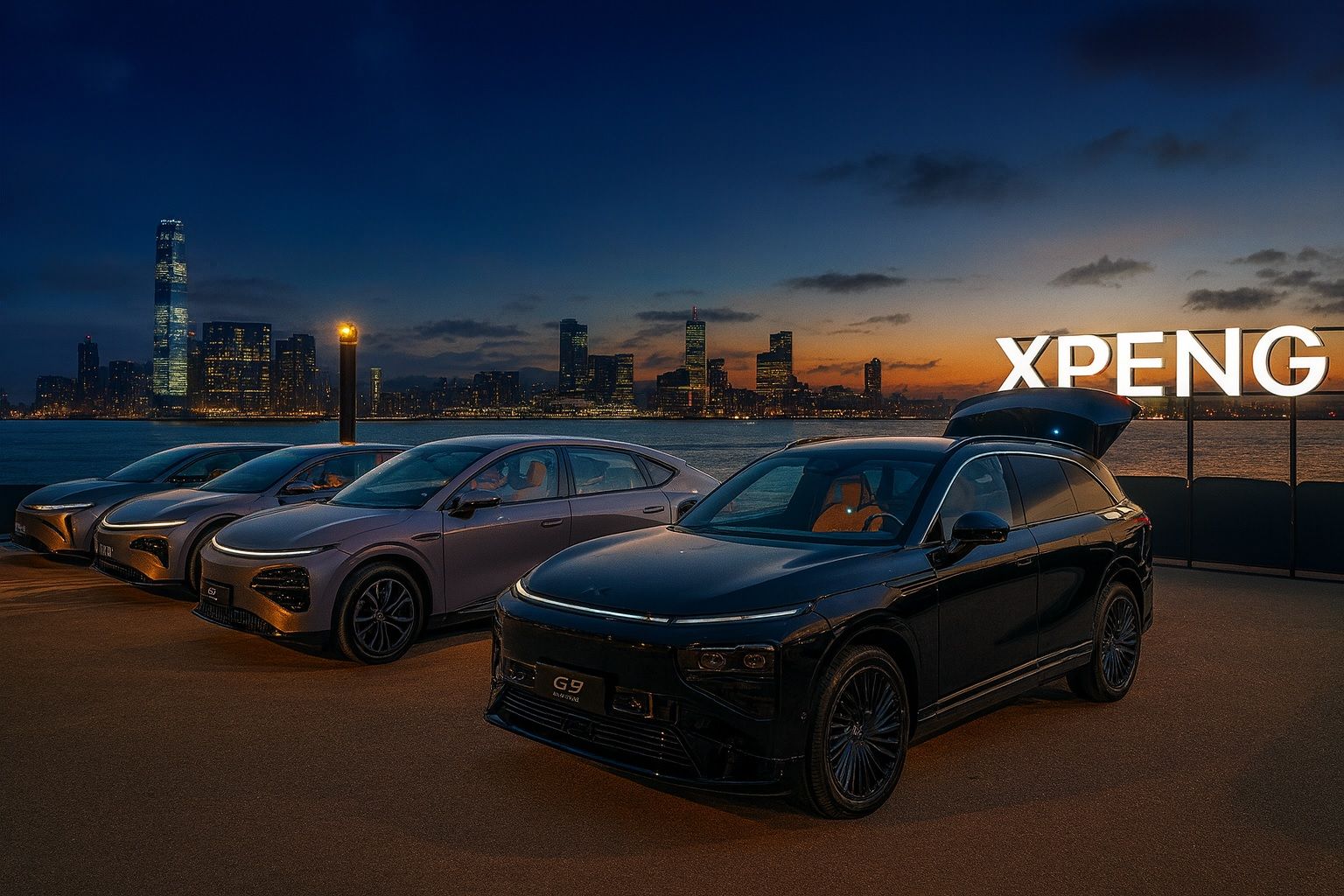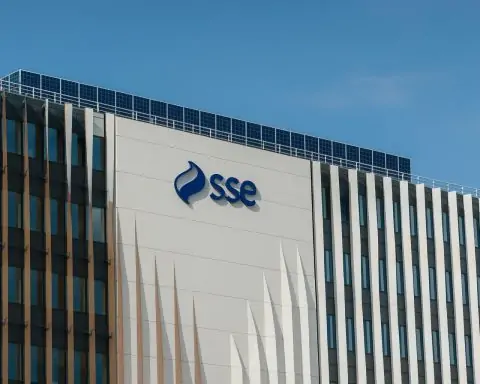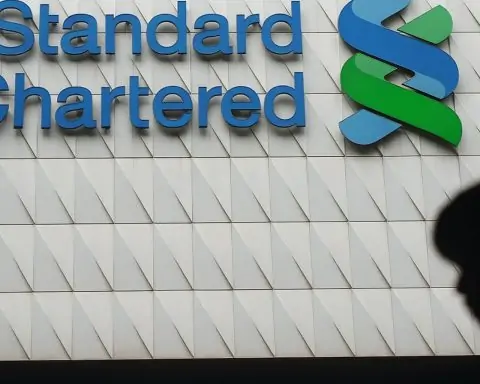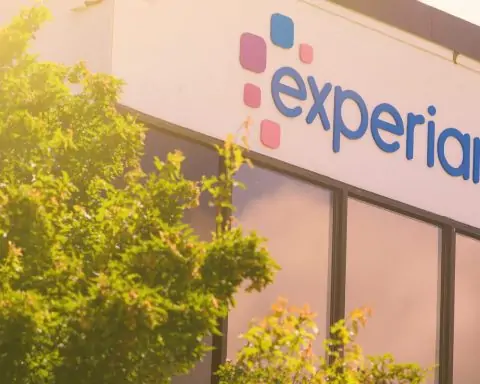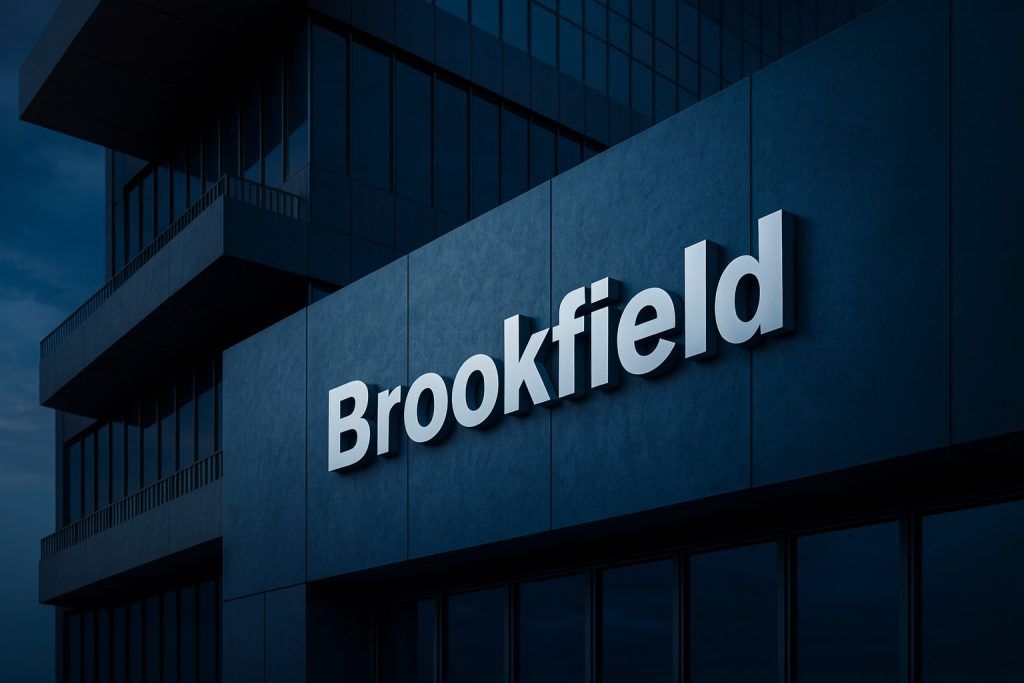- Stock Soars Over 100% YTD: XPeng’s U.S.-listed shares have more than doubled (~+105%) in 2025, recently hovering around the mid-$20s [1]. The stock hit multi-year highs near $27 this year and remains strong, buoyed by investor excitement over XPeng’s cutting-edge EV tech and AI capabilities [2].
- Record-Breaking EV Deliveries: XPeng delivered 116,007 smart EVs in Q3 2025 – a 149% year-over-year jump – including a record 41,581 vehicles in September alone (+95% YoY) [3]. Total deliveries for Jan–Sep 2025 reached 313,196 units (up 218% YoY) [4], far outpacing domestic rivals and signaling surging demand.
- Revenues Skyrocketing, Losses Shrink: Q2 2025 revenue surged +125% YoY to RMB18.27 billion (~$2.55 B) with gross margin improving to 17.3% [5]. Net loss narrowed ~63% YoY to RMB0.48 billion (~$70 M) [6] – XPeng’s smallest quarterly loss in five years [7] – as economies of scale and cost cuts take hold.
- Profitability in Sight: XPeng’s management and many analysts anticipate the company turning profitable by Q4 2025 [8] [9]. CEO He Xiaopeng has voiced optimism that XPeng’s financial performance could even “surpass what analysts are currently projecting,” thanks to soaring sales and margin gains [10]. Jefferies concurs, calling XPeng “poised for breakout growth” and forecasting its first-ever quarterly profit by late 2025 [11].
- Analysts Bullish – AI Edge & Partnerships: Morgan Stanley added XPEV to its focus list, citing XPeng’s robust new model pipeline and position as a “leading AI adopter” in EVs [12]. Wall Street’s consensus now rates XPeng a Moderate Buy, with an average price target around $25–26 (≈15% upside) [13]. The company’s tech-centric narrative – from autonomous driving (XNGP) to robotics – is fueling investor enthusiasm: “XPeng shares have seen a solid upswing…likely fueled by excitement around its advancements in autonomous driving, robotics and AI,” noted one market watcher [14].
- Outpacing NIO & Li Auto: XPeng is leading China’s EV startup trio in growth. It delivered roughly 272,000 vehicles in the first eight months of 2025, vastly eclipsing NIO’s ~89,000 in the same period [15]. Li Auto (which focuses on extended-range SUVs) also faces XPeng’s momentum. A key driver is XPeng’s new mass-market “Mona” sedan (born from its DiDi partnership), priced ~50% below a Tesla Model 3 – this affordable EV accounted for over 40% of XPeng’s sales (117k units Jan–Aug 2025) [16] [17]. XPeng’s broad lineup (from budget models to premium SUVs) and rapid innovation have given it an edge over peers in 2025.
- Strategic Moves & Tech Leadership: XPeng pours about 12% of revenue into R&D – nearly double the rate of some rivals – to fuel its autonomous driving and high-voltage battery tech advances [18]. Its tech prowess has attracted Volkswagen, which took a ~5% stake and is partnering with XPeng to co-develop EVs. In fact, VW will integrate XPeng’s XNGP autonomous driving system into new VW electric SUVs for China starting in 2026 [19]. XPeng’s global push is in full swing: it opened a European production line in 2025 and shipped over 18,000 EVs overseas in the first seven months [20], becoming the top-selling Chinese EV brand in Europe’s mid/high-end segment [21].
- Optimistic Outlook for Q4 2025 & Beyond: Heading into Q4, XPeng’s momentum remains strong. The company’s Q3 revenue guidance (¥19.6–21.0 billion) was met on the back of the record deliveries [22], and executives maintain that scaling volume will drive margin expansion. XPeng is “aiming to break even by the fourth quarter of 2025,” emphasizing a shift from growth-at-all-costs to sustainable profits [23]. Analysts expect solid continued growth through 2026, aided by multiple new model launches and XPeng’s expansion into international markets [24]. In CEO He’s words, “In 2026, you can expect a variety of Mona [budget] products launched in Chinese and European markets”, as XPeng strives to globalize its success [25]. The company is even exploring local production in Europe to mitigate tariffs [26]. XPeng’s leadership warns that China’s EV price war will likely spur consolidation – “only a handful of companies will survive” – and XPeng is maneuvering to ensure it’s among the winners [27].
Stock Price and 2025 Performance
XPeng’s stock (NYSE: XPEV) has been one of 2025’s standout performers. Year-to-date, XPEV shares have surged over 100%, significantly outperforming most EV peers [28]. The stock started the year in single-digit territory and rocketed into the $20s by Q3, briefly touching multi-year highs around $27 per share [29] [30]. It currently trades near the mid-$20s range after a slight pullback, still “sharply” up in 2025 [31].
This rally has been fueled by a string of positive catalysts: accelerating sales growth, improving financial metrics, and a compelling technology narrative. Market analysts note that XPeng’s tech-focused storyline – emphasizing its prowess in autonomous driving, AI, and robotics – has captured investor imagination. “XPeng shares have seen a solid upswing…likely fueled by investor excitement around its advancements in autonomous driving, robotics and AI,” one observer commented, contrasting it with NIO’s more modest recovery [32]. Indeed, XPeng’s stock “led the charge” among Chinese EV startups in 2025, outpacing NIO (whose stock, while up ~40% in a summer rally, still trades in the single digits) [33] [34].
Momentum picked up notably in the second half of 2025 as XPeng began posting record delivery numbers (see below) and signs of narrowing losses. By early October, after news of Q3’s blowout delivery figures, XPEV stock jumped again – at one point gaining ~7% in a single week [35] [36] – before stabilizing. Overall, the stock’s over 90% year-to-date climb reflects renewed investor confidence that XPeng can sustain torrid growth and chart a path to profitability [37]. However, its valuation has become a talking point: at ~2.6× price-to-sales it trades at a premium to legacy automakers and even some peers [38]. Bulls argue the premium is justified by XPeng’s growth (revenue doubling annually) and tech edge, while skeptics note the stock now prices in a good deal of optimism relative to traditional “fair value” metrics [39] [40]. Wall Street’s consensus targets imply moderate upside from current levels [41], suggesting the market is waiting to see if XPeng’s execution lives up to high expectations going forward.
Major News: Record Deliveries and Recent Developments
XPeng has made headlines with record-breaking delivery numbers in recent days, underlining its rapid rise in China’s EV market. On October 1, the company announced that it delivered 41,581 EVs in September 2025, a new monthly record and a 95% year-on-year increase [42]. This capped a blockbuster third quarter: 116,007 vehicles delivered in Q3, up 149% from the same quarter last year [43]. For context, XPeng delivered as many cars in Q3 2025 as it did in all of 2024, highlighting the explosive growth trajectory. Cumulative deliveries for the first nine months of 2025 hit 313,196 units – +218% versus Jan–Sep 2024 [44]. These figures blew past analyst expectations and firmly solidified XPeng’s position as one of China’s fastest-growing EV makers.
Several factors are driving this surge. First, XPeng’s new models have hit the sweet spot in the market. The company’s G6 SUV (launched mid-2023) and the revamped P7 sedan, packed with XPeng’s latest autonomous driving software, have been selling briskly. But the real game-changer has been the Mona series – XPeng’s mass-market EV line born from its acquisition of DiDi’s EV unit. The inaugural Mona model (the Mona M03 sedan, launched late 2024) is a ~$17k compact EV that has quickly become XPeng’s best-seller, consistently topping 10,000 units per month [45]. In fact, Mona accounted for about 40% of XPeng’s total sales this year (117k of the 272k Jan–Aug deliveries) [46]. By offering an affordable yet tech-enabled EV (the M03 costs roughly half the price of a Tesla Model 3 in China [47]), XPeng tapped into huge pent-up demand in the mid-market segment. This volume driver has complemented XPeng’s premium offerings and turbocharged its growth. (Notably, XPeng plans to launch the Mona brand internationally by 2026, see Outlook.)
Beyond raw sales numbers, XPeng also touted milestones in technology and quality. In September, the 10,000th unit of the new P7 rolled off the line, and XPeng reached a manufacturing efficiency of 40 jobs per hour (JPH) on its latest production line – indicating improved productivity as volumes scale [48]. The company also earned the MSCI ESG Rating of “AAA” for the third consecutive year [49], reflecting strong environmental and governance practices, which can appeal to sustainability-focused investors. On the tech front, XPeng’s flagship autonomous driving system (XNGP) saw rapid adoption – by September, 83% of urban-driving XPeng owners were actively using XNGP features [50]. XPeng rolled out a major XNGP update (incorporating Vision Language Action, or VLA, models for “full scenario” door-to-door ADAS) on its latest P7 and G7 vehicles [51]. This suggests that XPeng’s investment in AI driving tech is paying off in terms of user uptake, potentially giving it a competitive edge in consumer experience.
Investors greeted these developments positively. The delivery beats in Q3 not only underscore robust demand, but also bolster confidence that XPeng can achieve the scale needed for profitability. The stock’s early-October pop on the delivery news [52] indicates the market’s focus on volumes as a key catalyst. However, the company’s commentary has been measured: XPeng emphasized that while hitting 40k+ deliveries in a month is a major milestone, the focus now shifts to translating volume into margin improvement and earnings [53]. Management’s tone suggests they understand that simply breaking sales records won’t alone solve the “profitability puzzle” – cutting costs, increasing operational efficiency, and perhaps exercising pricing discipline in China’s competitive market will be critical next steps [54].
In other recent news, XPeng’s strategic partnership with Volkswagen reached a new level in early October. A report from China indicated that VW’s software unit in China will integrate XPeng’s XNGP autonomous driving system into VW-branded EVs from 2026 [55]. The first such model is expected to be a VW electric SUV co-developed with XPeng. This is a direct outcome of VW’s $700 million investment in XPeng back in 2023, and it underscores how XPeng’s tech is gaining validation from global automakers. Essentially, XPeng’s software could soon be powering a portion of Volkswagen’s China line-up, a remarkable endorsement of XPeng’s R&D. For XPeng, this tie-up not only brings in capital but could evolve into a revenue stream via software licensing or joint production deals [56]. It also aligns with China’s push for local innovation in auto tech. As VW struggles to catch up in EV software (its in-house Cariad unit has faced delays), partnering with XPeng offers a shortcut to compete with Tesla and Chinese rivals on advanced driver-assistance features.
Additionally, XPeng has been expanding internationally. The company opened its first overseas factory line in collaboration with Magna Steyr in Austria, which started assembling XPeng EVs for Europe in late 2025 [57]. XPeng is already selling in multiple European countries (Norway, the Netherlands, Norway, etc.), and it shipped 18,700+ vehicles overseas in Jan–Jul 2025, a 217% YoY jump [58]. While those volumes are still small relative to China, XPeng has quickly become the top-selling Chinese EV brand in Europe’s mid/high-end segment [59], ahead of compatriots like NIO. XPeng’s strategy of designing EVs with European tastes in mind (and now possibly producing some locally) aims to give it a foothold as Europe’s appetite for EVs grows. This global drive is a key differentiator – XPeng is thinking beyond China, positioning itself as an emerging global player akin to BYD.
In summary, the past few weeks brought very positive news flow for XPeng – record sales, tech achievements, and deepening alliances. These developments collectively strengthen XPeng’s narrative of a fast-growing, innovation-driven EV maker that is closing the gap with both domestic and foreign competitors. The challenge ahead, as XPeng openly acknowledges, is to turn this momentum into sustainable profits – a theme we explore next in the financials and outlook.
Financial Metrics and Earnings Trends
XPeng’s financial picture in 2025 shows dramatic improvement, though the bottom line remains in the red for now. The company’s Q2 2025 earnings (reported in August) highlighted the best revenue and margin performance in XPeng’s history [60]:
- Revenue: XPeng’s Q2 revenue soared to RMB18.27 billion (~$2.55 billion), up 125.3% year-on-year [61]. This growth was fueled by the huge jump in deliveries (103k vehicles in Q2 vs 30k in Q2 2024) and a richer sales mix. Notably, vehicle sales revenue rose even faster (+147% YoY) as XPeng sold more higher-trim vehicles like the G6 SUV [62]. For the first half of 2025, XPeng’s revenues nearly doubled versus 2024, reflecting an extraordinary growth phase.
- Gross Margin: XPeng achieved a gross profit margin of 17.3% in Q2 [63], a record high for the company. This was a significant jump from ~14% in Q1 and just 10% a year earlier [64]. The improving margin indicates XPeng is gaining efficiencies and some pricing leverage as it scales. In fact, vehicle-level margin (gross profit on car sales) hit 14.3% in Q2, up ~8 percentage points YoY [65]. XPeng credited cost reductions (possibly from better supply chain terms and localized manufacturing) and product mix optimization – meaning a higher proportion of sales came from models like the G6 and P7 which carry better margins than older entry models [66]. Achieving mid-teens margins is a big deal in the EV world; for perspective, XPeng’s margin is now on par with Tesla’s recently compressed auto gross margin (~17-18% in mid-2025) [67], and not far from BYD’s ~18-19% margin (though BYD is profitable at net level) [68].
- Net Income: XPeng still posted a net loss in Q2 2025, but the loss narrowed sharply to RMB0.48 billion (~$70 million) [69]. This was a 62.8% improvement from the RMB1.28 billion loss a year ago [70]. On an adjusted (non-GAAP) basis, the Q2 loss was even smaller at RMB0.39 billion. These are the smallest quarterly losses XPeng has recorded since its early startup days [71]. The trend is clearly toward breakeven: XPeng’s net loss margin was only ~2.6% of revenue in Q2, vastly improved from double-digit negatives previously. For the first half of 2025, XPeng’s total net loss was around RMB1.1 billion – a fraction of the multibillion losses it sustained per year in 2022–2023. This reflects disciplined cost control amid growth.
- Cash & Investment: XPeng is well-capitalized to fund its expansion. As of Q2, the company held RMB47.6 billion (~$6.6 billion) in cash, short-term investments, and bank facilities [72]. Importantly, XPeng bolstered its balance sheet via strategic investments – notably Volkswagen’s $700M equity stake announced in 2023 – and government support (local Chinese provinces have provided some backing to EV firms). With its current cash, XPeng has a buffer to sustain heavy R&D spending and any temporary losses for multiple quarters if needed [73]. This alleviates near-term liquidity concerns, which were a worry during the 2022 EV downturn.
- Operating Expenses: XPeng continues to invest aggressively in innovation. In Q2, R&D expenses jumped 50% YoY to RMB2.21 billion [74], equivalent to ~12% of revenue [75]. This level of R&D (as a share of sales) is extraordinarily high compared to traditional automakers (for example, BYD’s R&D is ~6–7% of sales [76]). XPeng is channeling funds into developing advanced driver-assistance algorithms, next-gen battery tech (like 800V high-voltage platforms), and future models [77]. While this spending pressures current profits, it’s aimed at securing a long-term technological lead. Selling, general & administrative (SG&A) costs have also risen as XPeng expands its sales network (now 677 stores in 224 cities by Q3 [78]). However, XPeng’s opex growth (in percentage terms) is far lower than its revenue growth, indicating improving operating leverage.
- Guidance: In August, XPeng issued guidance for Q3 2025 of delivering 113,000–118,000 vehicles and RMB19.6–21.0 billion in revenue [79]. The company essentially hit the top end of those ranges (116k deliveries and likely ~¥20.7B revenue given average selling prices) [80]. This marks the second straight quarter XPeng has guided strong and delivered on it, boosting management’s credibility. Although Q3 earnings are yet to be officially released, the delivery beat suggests XPeng may post another record revenue and a further narrowed loss (perhaps approaching breakeven on an operating level). For Q4, XPeng itself has not published formal guidance yet, but executives have signaled confidence that the positive trends will continue and that breaking even in Q4 is within reach [81]. Analysts are modeling Q4 to show continued growth and potentially XPeng’s first slightly positive EPS, given seasonal strength and ongoing cost improvements [82].
In sum, XPeng’s financials are rapidly moving in the right direction. The company is transitioning from a phase of cash-burning, heavy-investment growth to one where scale is driving real operational leverage. The inflection can be seen in metrics like gross margin and net margin, which are climbing toward positive territory. If XPeng can continue this trajectory – i.e. keep scaling volumes while holding the line on costs – it stands to achieve its first quarterly profit in the very near future (Q4 2025 or early 2026). The major caveat is the competitive environment: China’s EV price war has seen aggressive discounting by Tesla and others, which could pressure margins. XPeng has so far managed to improve margins even amid falling EV prices (helped by cost reductions and mix). Whether it can sustain that as competition intensifies will be a key factor in hitting its profitability goal.
Analyst Commentary and Expert Opinions
Wall Street analysts and industry experts have grown increasingly bullish on XPeng as its fortunes improved in 2025. A chorus of positive commentary – from global banks to tech media – has emerged, highlighting XPeng’s strong execution and future potential:
- Morgan Stanley’s Bull Case: In August 2025, Morgan Stanley added XPeng to its Global Focus List, effectively endorsing it as a top pick among emerging market stocks [83]. Morgan Stanley’s lead auto analyst for Asia, Tim Hsiao, reiterated his Buy rating and set a price target of HK$108 (about $28 USD) [84]. The rationale? Hsiao cited XPeng’s “robust model pipeline” and its role as a “leading AI adopter” in autos as key strengths [85]. He expects XPeng to deliver solid sales in 2025 and expand further in 2026, driven by new model launches (like the G7 SUV, updated P7, and the Mona series) and its new hybrid powertrain option rolling out [86]. Morgan Stanley also praised XPeng’s Volkswagen partnership, calling it “a critical step” that could unlock high-margin software revenue streams beyond traditional car sales [87]. This recognition from a major bank boosted investor confidence; XPeng’s stock jumped on the announcement of the Focus List inclusion [88], and it signaled that top analysts see XPeng as a long-term winner in the EV race.
- Jefferies’ Profit Forecast: Investment bank Jefferies also highlighted XPeng in late August 2025, predicting that XPeng is on track to turn profitable by Q4 2025 – much sooner than many rivals [89]. Jefferies analysts lauded XPeng’s growth and declared the company “poised for breakout growth”, reiterating a Buy rating (reportedly with a price target around $29) [90]. This stance was noteworthy because few EV startups have managed to reach breakeven so quickly; Jefferies essentially argued XPeng’s rapid volume ramp and improving margins could push it over the finish line to profitability within the current year, a testament to management’s strategy.
- Consensus Ratings & Targets: According to Bloomberg and TipRanks data, as of October 2025 XPeng has 8 “Buy” ratings vs 2 “Hold” and 1 “Sell” [91] – a generally bullish outlook. The average 12-month target price is around $25–26, which is modestly above the current share price (mid-$22s to $24). This implies analysts see some upside, though perhaps tempered by the stock’s big run-up. In fact, XPeng’s stock “has rallied 93% year-to-date”, as one report noted [92], so part of Wall Street’s job is gauging how much of the good news is already priced in. Nonetheless, the sentiment shift from a year ago (when most were cautious due to China’s EV slump) is striking. XPeng is now widely seen as one of the best-positioned Chinese EV makers, thanks to its sales momentum and tech differentiation.
- Valuation Views: Some analysts urge a bit of caution on valuation. Equity research firm Simply Wall St, for example, did a deep dive into XPeng’s fundamentals after the stock’s 104% year-to-date rally [93]. Their analysis suggested XPeng’s fair value by DCF (Discounted Cash Flow) was roughly $21.6 per share, slightly below the trading price – implying the stock was pricing in a 9–10% premium over the model’s intrinsic value [94]. They also noted XPeng’s Price/Sales multiple (around 2.6×) is higher than the auto industry average, though a bit lower than some high-growth peers [95]. In short, by traditional metrics XPeng isn’t “cheap,” but that’s often the case with companies on the cusp of turning profitable – investors pay up for future growth. The Simply Wall St piece concluded that XPeng’s current valuation is “about right” if one believes its growth story, but any stumble in execution could lead to volatility [96] [97].
- Tech and EV Experts: Beyond the financials, tech industry commentators have also chimed in. TS2 (Tech Space 2.0), a technology news outlet, recently compared XPeng to its arch-rival NIO and found “market watchers see XPeng as the more exciting story right now,” thanks to its accelerating growth and heavy focus on autonomous tech [98]. They highlighted that XPeng’s management is targeting profitability by late 2025 which contrasts with NIO, whom analysts don’t expect to break even until much later (2027+ or beyond) [99]. This dichotomy – one Chinese EV startup potentially turning profitable imminently, the other years away – has not been lost on investors. Additionally, XPeng’s moves in robotics (like its development of a robotic pony and humanoid robot prototypes) and flying vehicles have added to the “tech halo” around the brand, even if those projects are nascent. While not directly affecting near-term earnings, they reinforce XPeng’s image as an innovation leader among EV companies – something often mentioned in analyst notes as a reason for a valuation premium.
- Quotes and Soundbites: A few soundbites capture the expert sentiment. As noted, Morgan Stanley called XPeng a “leading AI adopter” that is setting itself apart [100]. A Nasdaq.com market column was quoted saying “XPeng’s rally [is] fueled by investor excitement around its advancements in autonomous driving, robotics and AI” [101]. And XPeng’s own CEO, He Xiaopeng, has confidently stated that results may beat expectations and that XPeng is pivoting to focus on profitability after years of expansion [102]. He’s effectively signaling to the market that XPeng’s hyper-growth phase is translating into a financially sustainable business – a key narrative shift. This optimistic messaging, combined with tangible performance improvements, has largely won over analysts.
In summary, the expert consensus around XPeng is increasingly positive, hinging on the view that XPeng has turned a corner from cash-burning startup to a scalable automaker with real competitive advantages. There are, of course, dissenting voices (a minority still have Neutral or Sell ratings, pointing to risks like competition and an overextended Chinese auto market). But with major players like Morgan Stanley and Jefferies in the bull camp and XPeng delivering on milestones, the company’s credibility has markedly improved. The next big validation, which analysts eagerly await, would be XPeng actually hitting that breakeven/profitability milestone. As one analyst put it, XPeng’s story is now about “convert[ing] rapid delivery and revenue growth into sustainable profitability” [103] – if they can pull that off, it could indeed be a breakout moment for the company and its stock.
Strategic Positioning in the EV Market
In the high-stakes electric vehicle race, XPeng has been strategically positioning itself to compete not just in China but globally, leveraging technology and partnerships to punch above its weight. Here’s how XPeng stacks up against key competitors like NIO, Li Auto, Tesla, and BYD, and why it’s carving out a strong niche:
1. Domestic Rivalry – XPeng vs. NIO vs. Li Auto: XPeng, NIO, and Li Auto are often grouped as China’s “EV startup trio,” but their approaches differ. NIO has focused on the premium segment with innovative services (like battery swapping) and a strong lifestyle brand, while Li Auto has dominated the family SUV market with extended-range EVs (EREVs that have a small gas engine as a generator). In 2025, XPeng has clearly outpaced NIO in growth – delivering roughly three times as many cars as NIO year-to-date [104]. NIO’s deliveries (hampered by a limited lineup and pricing issues) rose about 40% YoY in Q3, whereas XPeng’s skyrocketed ~150% [105]. XPeng’s ability to offer products across segments is a strength: it has a flagship large SUV (G9), a mid-size SUV (G6), a sporty sedan (P7), a compact sedan (P5, and now the Mona M03) and even an upcoming MPV. This broad portfolio contrasts with NIO’s initially narrow lineup and Li Auto’s focus on 5-6 seat SUVs. As a result, XPeng grabbed consumers both at the high-end (those seeking Tesla-like tech features) and at the mass market (those who want an affordable yet capable EV). Li Auto, to its credit, has been the sales volume leader among the trio on a monthly basis (often delivering ~30k/month in 2025), thanks to its wildly popular EREV SUVs that alleviate range anxiety. But Li’s growth rate (~60% YoY) has been overshadowed by XPeng’s triple-digit surges, and Li is only now expanding beyond SUVs.
Another aspect is financial runway and profitability prospects. Li Auto has been the only one of the three to achieve occasional quarterly profits (due to its higher average selling prices and positive gross margins early on). NIO and XPeng had been incurring losses. Now, XPeng is closing the gap rapidly – its net loss in Q2 was far smaller than NIO’s (XPeng lost ~$70M vs NIO’s ~$697M in Q2) [106]. XPeng’s management boldly claims it will be profit-making by end of 2025, whereas NIO is not expected by analysts to break even until 2027–2029 [107]. Li Auto is already near breakeven and possibly in the black for 2025 due to its hybrid model’s higher margins. So XPeng is essentially trying to join Li in the “profitable club” earlier than NIO, a narrative that, if it plays out, could re-rate XPeng’s stock relative to NIO’s.
On technology, XPeng arguably has an edge in autonomous driving among Chinese peers. Its XNGP system offers navigation-guided automated driving on highways and city streets without reliance on high-definition maps (a big step in China’s complex urban environments). XPeng has been pouring R&D into full-stack self-driving algorithms, perception AI, and even robotics, whereas NIO has focused heavily on user experience and Li on powertrain efficiency. XPeng’s high R&D spend (12% of revenue) dwarfs Li Auto’s (~8%) and is comparable to NIO’s (~15%) [108]. The difference is XPeng’s R&D is yielding visible features (XNGP, robotaxis testing, etc.) that excite tech-savvy buyers. A concrete result: as of 2025, XPeng is the first among the trio to enable near full-scenario ADAS (city navigation, automated parking, etc.) in production cars, which it began rolling out in cities like Guangzhou and Shenzhen. This has bolstered XPeng’s image as the “tech leader” of the group, while NIO is often seen as the “service/luxury leader” and Li as the “pragmatic family choice.”
2. Battling Tesla (and BYD) on Home Turf: No discussion of EV competition is complete without Tesla (the global EV champion) and BYD (China’s EV behemoth). In China, Tesla and BYD are the volume leaders, but XPeng is part of the rising cohort of domestic players eroding Tesla’s share. Tesla has had to repeatedly cut prices in China in 2023–2025 to stoke demand, which squeezed its margins and brand cachet. By August 2025, Tesla’s sales in China (and Europe) were flagging – for instance, Tesla’s EU registrations fell ~37% YoY in August [109] as Chinese brands surged. Meanwhile, BYD has become an “800-pound gorilla,” selling over 250k NEVs per month globally by late 2025 (including plug-in hybrids).
XPeng can’t match Tesla or BYD on sheer scale yet, but it is carving out a solid slice of the market by differentiating on innovation and partnerships. One major strategic win was the Volkswagen alliance, which effectively validated XPeng’s technology at a global level [110]. While Tesla operates alone (vertically integrated) and BYD leverages its massive domestic supply chain, XPeng’s model is collaborative: partner with giants to accelerate growth. The VW deal not only brought XPeng funding and a future revenue stream (through licensing XPeng’s EV platform/software), but also prestige – being chosen by VW is a badge of quality. Similarly, XPeng’s partnership with ride-hailing giant DiDi (for the Mona series) gave it instant access to a huge user base and data for autonomous driving (via DiDi’s network). These tie-ups highlight XPeng’s nimbleness; instead of going solo, it’s leveraging synergies to compete with far larger rivals.
In terms of product, XPeng is often dubbed “the Tesla of China” for its tech orientation, but in 2025 it one-upped Tesla in a few areas. For example, XPeng introduced features like ultra-fast charging (480 kW S4 chargers) ahead of Tesla’s V4 Superchargers, and it integrated lidar sensors for autonomy when Tesla shunned them. XPeng’s vehicles are generally priced lower than comparable Teslas, benefiting from cheaper local manufacturing and government incentives. This has allowed XPeng to win over cost-conscious Chinese buyers who want a high-tech EV but balk at Tesla’s (formerly) premium pricing. Tesla’s market share in China has been roughly 8–10%, and while XPeng’s is smaller (~3–4%), the trend is Chinese brands collectively gaining share at Tesla’s expense [111] [112]. Notably, Tesla’s global gross margin has slipped to ~17.7% by Q2 2025 [113] due to price cuts, almost on par with XPeng’s improving 17.3% – meaning XPeng has caught up in efficiency to an extent. Tesla still sells ~20x more cars than XPeng annually, but XPeng is positioned to exploit niches Tesla hasn’t – like economy EVs (via Mona) and perhaps new form factors (XPeng revealed a prototype flying car and robotics that Tesla has yet to commercialize).
Against BYD, XPeng competes in the higher end of the market. BYD’s core strength is mid-range and entry-level EVs across dozens of models, dominating sales charts in China (BYD sold ~1.3 million NEVs in the first half of 2025 alone [114]). XPeng cannot rival BYD’s volume or cost advantages (BYD is vertically integrated into batteries, chips, etc.), but XPeng focuses on smart features where BYD traditionally lagged. XPeng’s infotainment, software updates, and autonomous features tend to be more advanced than BYD’s, giving it an appeal to tech-oriented consumers. Also, XPeng’s brand is positioned more premium than BYD’s main Dynasty series. This means XPeng’s average selling price is higher and its customers less price-sensitive than BYD’s mass-market buyers, which helped XPeng avoid the worst of the price war that BYD fought with Tesla in early 2023. Still, BYD’s scale (and profitability – BYD earned $1.2B net profit in Q2 2025 [115]) make it a formidable competitor in every segment.
3. Global Ambitions: Strategically, XPeng is one of the few Chinese EV startups aggressively expanding abroad. NIO and BYD have international plans too, but XPeng was early to enter Europe (Norway in 2020) and continues to push new markets. It has an “Europe in mind” strategy – evidenced by setting up an R&D center in Munich and discussing potential local manufacturing in the EU [116]. XPeng’s CEO He Xiaopeng famously said “In Europe, with Europe”, indicating a long-term commitment to building cars that meet Euro standards and tastes. This global mindset may give XPeng first-mover advantages in branding and distribution outside China. Tesla, of course, is worldwide, but XPeng could become one of the first Chinese automakers to truly break into Western markets in a meaningful way, especially if it undercuts on price while offering comparable tech. Europe’s receptiveness to Chinese EVs is growing (as seen by MG, Polestar, etc.), and XPeng’s early foothold could yield dividends by 2026–2027 if its models gain traction.
4. Survival of the Fittest: The Chinese EV market in 2025 is intensely competitive – dozens of startups are battling, and a shakeout is likely. XPeng’s CEO has openly acknowledged this: only a few will survive the ongoing “price wars and regulatory pressure”, and he expects consolidation via buyouts [117]. XPeng is shoring itself up to be among the survivors by scaling fast (to achieve cost per unit reductions), diversifying (both in product range and geographically), and securing strategic allies (VW, DiDi, and supportive local governments). This is a smart hedge against the risk of being a smaller standalone player. If the industry consolidates, XPeng could either be a buyer (snapping up tech or talent from failing rivals) or even a target for larger firms (though the VW stake perhaps precludes any hostile takeover). In any case, XPeng’s aggressive growth in 2025 has likely pushed it ahead of many weaker EV startups (some of which, like Byton and WM Motor, have already fallen by the wayside). XPeng is now arguably in the top tier of China’s EV makers, after BYD and Tesla, alongside Geely’s Zeekr and NIO/Li Auto. This positioning is crucial – in a survival scenario, XPeng’s strong brand and innovation could make it one of the last independents standing or a valuable partner.
Overall, XPeng’s strategic positioning can be summarized as: technology-driven, partnership-empowered, and globally oriented. It is leveraging its strengths in software and innovation (autonomy, connectivity) to differentiate in a crowded market. It’s also pragmatic in seeking alliances (with VW, etc.) that provide both capital and credibility, something Tesla never did and NIO/Li haven’t matched at that scale. By tackling both the premium segment (with feature-rich cars) and the mass market (with Mona), XPeng aims to capture a wide swath of the EV market. The next year will test how well this strategy holds up, especially as others respond (e.g., NIO launching sub-brands for cheaper EVs, Tesla possibly introducing a ~$25k model by 2025). For now, XPeng appears to be on a competitive upswing, seizing market share at home and making inroads abroad in a way that sets it apart from many peers.
Outlook: Q4 2025 and into 2026
Looking ahead, XPeng faces bright opportunities tempered by execution challenges. The company’s own outlook and external forecasts suggest continued high growth through Q4 2025 and 2026, with a critical inflection toward profitability:
Q4 2025 Expectations: XPeng’s spectacular Q3 delivery numbers have set a high base for Q4. Typically, Q4 is seasonally strong for auto sales in China, and XPeng will aim to sustain or even exceed the ~40k monthly delivery pace. Internally, XPeng is likely targeting around 130,000+ deliveries in Q4 2025, which would bring full-year 2025 deliveries well above 400k (versus ~120k in 2024). Achieving that would mean nearly 3× growth for the year – an astonishing feat. Analysts anticipate Q4 revenue could reach roughly RMB22–24 billion (given the higher volume and possibly higher ASP with more G9/G6 sales). Crucially, if XPeng holds gross margins in the mid-teens and controls costs, this volume should push it to break even. Jefferies and other bullish analysts have explicitly projected Q4 2025 as XPeng’s first profitable quarter [118], an outlook echoed by XPeng’s CEO. Even a tiny net profit (say, a 1-2% net margin) would be a milestone proving the business model.
XPeng’s management has expressed confidence, with He Xiaopeng indicating profitability by Q4 is within reach and that financial results could beat current street estimates [119]. One upside factor: XPeng’s newer models like the G6 SUV were ramping production through Q3, so Q4 will be the first quarter with full output of these high-demand vehicles, potentially lifting revenue and margins further. The main downside risk for Q4 is pricing – if the EV price war intensifies in China (for example, if Tesla implements another major cut on Model Y), XPeng might feel pressure to respond, which could pinch margins. Additionally, any supply chain hiccups (battery cell shortages, etc.) in ramping production could limit deliveries. But so far, XPeng has navigated those well.
2026 and Beyond – Growth Trajectory: Beyond Q4, the outlook into 2026 is broadly positive. Analysts expect XPeng to maintain strong growth, albeit not at the breakneck 2025 pace (which benefited from a low base). For 2026, early consensus calls for XPeng’s revenues to rise another ~30–50%, and importantly, for the company to turn full-year profitable. For instance, XPeng’s internal goals (as hinted to investors) include reaching around ¥137 billion in revenue and ¥6.4 billion in net profit by 2028 [120] – implying a CAGR of ~30% in revenue and a healthy profit margin by then. While 2028 is distant, it sets a rough trajectory: profitable growth with expanding margins each year post-2025.
In 2026, XPeng’s product roadmap will play a key role. The company plans to launch an array of new models and variants:
- The expansion of the Mona affordable EV lineup internationally. He Xiaopeng confirmed that by 2026, XPeng will introduce multiple Mona-series models in both China and Europe [121]. This could include a Mona SUV (spy shots suggest one is in development [122]) and possibly a hatchback, targeting entry-level segments. These products aim to replicate the M03’s success globally, potentially giving XPeng a big volume boost in markets like Southeast Asia or Eastern Europe where budget EVs have demand.
- Updates to high-end models: XPeng will likely release facelifts or next generations of its P7 sedan and G9 large SUV to keep them fresh against Tesla’s updated models. Rumors also hint at XPeng exploring a sports car or coupe EV leveraging its robotics tech, though that might be concept-stage.
- Hybrid/EREV technology: XPeng in 2024 unveiled a new “super electric hybrid” system – essentially a range-extender powertrain to offer petrol backup (similar to Li Auto’s approach). Morgan Stanley’s note referenced XPeng’s “new super electric hybrid system” boosting expansion [123]. We might see XPeng launch a hybrid variant of one of its SUVs (perhaps the G9) in 2026, which could attract customers not ready for full EV – especially in some emerging markets.
Global expansion in 2026 will also accelerate. XPeng is planning retail entry into more European countries and possibly initial steps into the Middle East or other regions. Its tie-up with Volkswagen will materialize in 2026 with the co-developed VW-XPeng SUV hitting the Chinese market – that should bring XPeng licensing revenue and also increased scale (since XPeng’s platform will underpin VW vehicles too) [124]. We can expect XPeng to continue building its brand abroad; for example, the company might increase marketing in Europe (leveraging the Munich R&D and perhaps showcasing at European auto shows). If geopolitical conditions allow, XPeng could even test the waters in the U.S. indirectly (though direct entry to the U.S. market is unlikely in the near-term due to trade and political barriers). Instead, XPeng might focus on South East Asia (it has presence in markets like Singapore via a pilot) and Middle East where EV adoption is nascent but growing.
A key strategic theme for XPeng’s future is software and services monetization. With so many XPeng cars now equipped with advanced hardware (lidars, sensors), the company can roll out OTA (over-the-air) upgrades and subscription features. For instance, XPeng might introduce a subscription for full self-driving features (similar to Tesla’s FSD package) once XNGP is mature. The CEO has hinted at exploring recurring revenue models – this aligns with Volkswagen’s interest too, as VW sees software as a new revenue avenue [125]. By 2026, XPeng could be generating meaningful revenue from services like autonomous driving software, premium connectivity, or even an insurance product for XPeng owners. These high-margin streams would bolster XPeng’s profitability beyond just car hardware margins.
Competitive outlook: The competitive environment will remain intense. Tesla is rumored to launch a $25k “Model 2” as early as late 2025 or 2026 [126], which would directly challenge XPeng’s mid-tier offerings and Mona. NIO is launching two sub-brands (codenamed Firefly and Alps) to go downmarket and will have more models out in 2026, possibly increasing competition in China’s ~¥150k-250k segment where XPeng plays. Li Auto will have its first pure EV models (beyond EREVs) by 2026, expanding its reach. And Huawei (through Aito) and new players like Xiaomi Auto will be entering the EV fray around 2025–26, adding further pressure. XPeng’s plan to stay ahead is clear: keep innovating (leading in tech), keep costs in check (through scale and partnerships), and expand to markets where competitors aren’t yet.
One advantage XPeng may leverage is the Chinese government’s support for consolidation and strength in the EV sector. There’s an implicit tailwind for the top domestic EV firms – policy (subsidies, access to capital, favorable regulations) often favors those who show they can lead in innovation and scale. XPeng, with its AAA ESG rating and high-tech focus, ticks many boxes for policymakers wanting national EV champions. It wouldn’t be surprising if in 2026 XPeng receives more support, perhaps in the form of incentives for its European expansion or inclusion in government fleet purchases, etc.
Bottom Line: XPeng’s outlook going into Q4 2025 and 2026 is highly promising. The company is on the cusp of what could be a landmark achievement – turning profitable – which would validate its business model after years of investment. Achieving that in Q4 would set the stage for 2026 to be a year of solidifying profits and expanding globally. Revenue growth is expected to remain robust (though percentage growth will naturally slow from the heady >100% rates to more sustainable levels). If XPeng executes well, by the end of 2026 it could firmly establish itself as a top-tier global EV manufacturer with a foothold in multiple continents, a diversified product slate, and a reputation for tech leadership. The market, of course, will be watching for any missteps. But for now, XPeng’s trajectory points to it being one of the breakout success stories in the EV industry, transforming from an ambitious startup into a profitable, internationally recognized electric automaker.
Sources: XPeng Inc. press release and delivery reports [127]; Tech media analysis by TS2 [128] [129]; Financial data from AInvest and company filings [130] [131]; Analyst commentary from Morgan Stanley (TipRanks) [132] [133] and Jefferies [134]; CEO insights via CoinCentral [135] [136]; Strategy details from CarNewsChina [137] [138] and Automotive World [139]; and other market sources as linked above.
References
1. simplywall.st, 2. ts2.tech, 3. www.automotiveworld.com, 4. www.automotiveworld.com, 5. www.ainvest.com, 6. www.ainvest.com, 7. ts2.tech, 8. coincentral.com, 9. ts2.tech, 10. coincentral.com, 11. evworld.com, 12. www.tipranks.com, 13. www.tipranks.com, 14. ts2.tech, 15. ts2.tech, 16. carnewschina.com, 17. carnewschina.com, 18. ts2.tech, 19. www.automotiveworld.com, 20. ts2.tech, 21. ts2.tech, 22. www.sahmcapital.com, 23. coincentral.com, 24. www.tipranks.com, 25. carnewschina.com, 26. carnewschina.com, 27. carnewschina.com, 28. simplywall.st, 29. ts2.tech, 30. ts2.tech, 31. ts2.tech, 32. ts2.tech, 33. ts2.tech, 34. ts2.tech, 35. www.sahmcapital.com, 36. www.sahmcapital.com, 37. www.tipranks.com, 38. simplywall.st, 39. simplywall.st, 40. simplywall.st, 41. www.tipranks.com, 42. www.automotiveworld.com, 43. www.automotiveworld.com, 44. www.automotiveworld.com, 45. carnewschina.com, 46. carnewschina.com, 47. carnewschina.com, 48. www.automotiveworld.com, 49. www.automotiveworld.com, 50. www.automotiveworld.com, 51. www.automotiveworld.com, 52. www.sahmcapital.com, 53. www.sahmcapital.com, 54. www.sahmcapital.com, 55. www.automotiveworld.com, 56. www.tipranks.com, 57. ts2.tech, 58. ts2.tech, 59. ts2.tech, 60. www.ainvest.com, 61. www.ainvest.com, 62. www.ainvest.com, 63. www.ainvest.com, 64. www.ainvest.com, 65. www.ainvest.com, 66. www.ainvest.com, 67. www.ainvest.com, 68. www.ainvest.com, 69. www.ainvest.com, 70. www.ainvest.com, 71. ts2.tech, 72. www.ainvest.com, 73. www.ainvest.com, 74. www.ainvest.com, 75. ts2.tech, 76. ts2.tech, 77. www.ainvest.com, 78. www.ainvest.com, 79. www.ainvest.com, 80. www.sahmcapital.com, 81. coincentral.com, 82. coincentral.com, 83. www.tipranks.com, 84. www.tipranks.com, 85. www.tipranks.com, 86. www.tipranks.com, 87. www.tipranks.com, 88. www.tipranks.com, 89. evworld.com, 90. evworld.com, 91. www.tipranks.com, 92. www.tipranks.com, 93. simplywall.st, 94. simplywall.st, 95. simplywall.st, 96. simplywall.st, 97. simplywall.st, 98. ts2.tech, 99. ts2.tech, 100. www.tipranks.com, 101. ts2.tech, 102. coincentral.com, 103. www.sahmcapital.com, 104. ts2.tech, 105. www.automotiveworld.com, 106. ts2.tech, 107. ts2.tech, 108. ts2.tech, 109. markets.financialcontent.com, 110. www.tipranks.com, 111. markets.financialcontent.com, 112. markets.financialcontent.com, 113. www.ainvest.com, 114. www.ainvest.com, 115. www.ainvest.com, 116. carnewschina.com, 117. carnewschina.com, 118. evworld.com, 119. coincentral.com, 120. www.sahmcapital.com, 121. carnewschina.com, 122. cnevpost.com, 123. www.tipranks.com, 124. www.tipranks.com, 125. www.tipranks.com, 126. markets.financialcontent.com, 127. www.automotiveworld.com, 128. ts2.tech, 129. ts2.tech, 130. www.ainvest.com, 131. www.ainvest.com, 132. www.tipranks.com, 133. www.tipranks.com, 134. evworld.com, 135. coincentral.com, 136. coincentral.com, 137. carnewschina.com, 138. carnewschina.com, 139. www.automotiveworld.com
